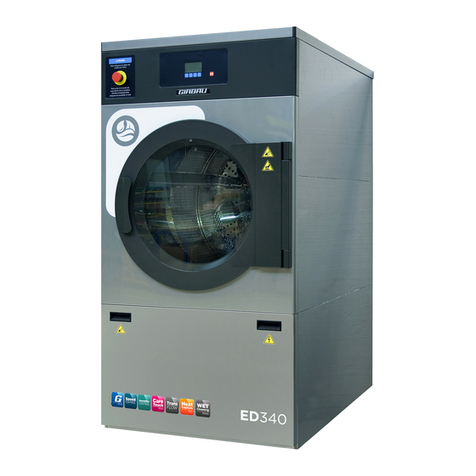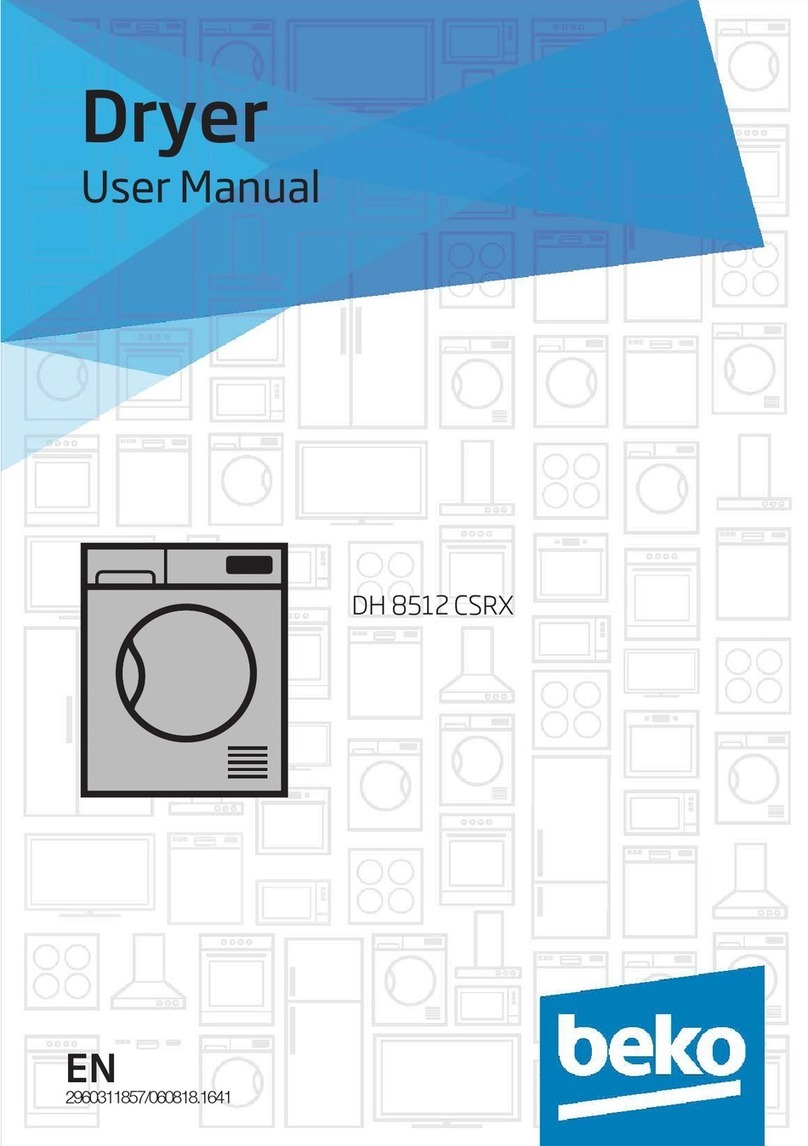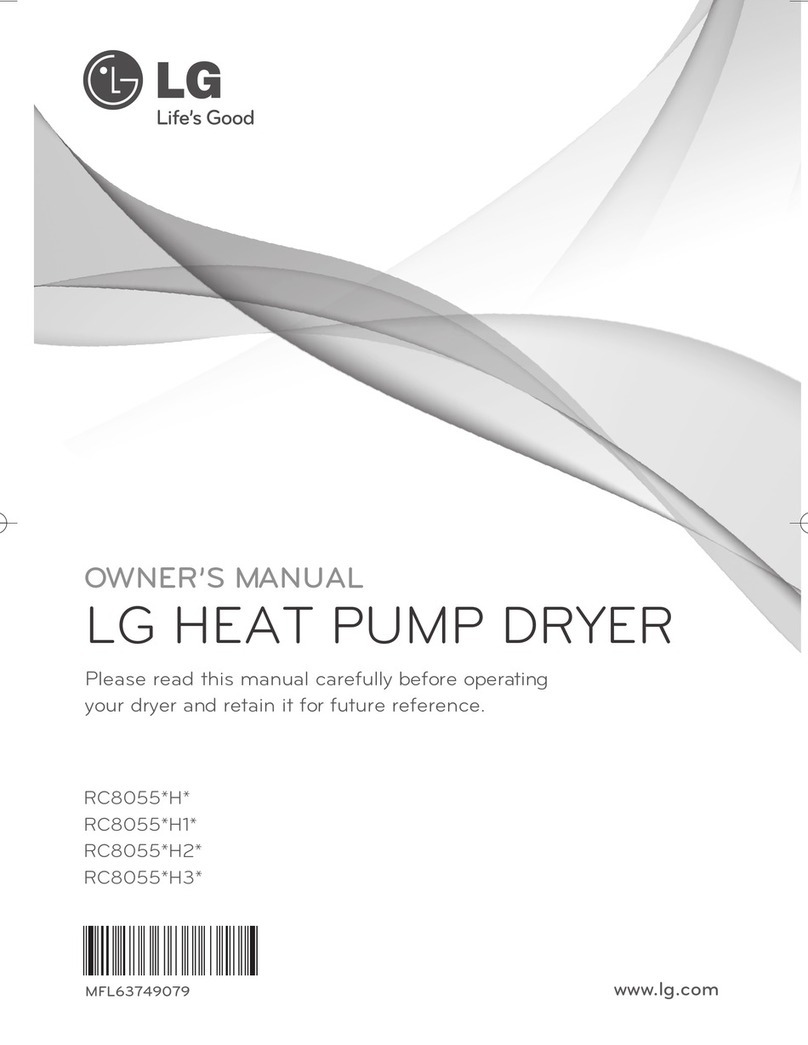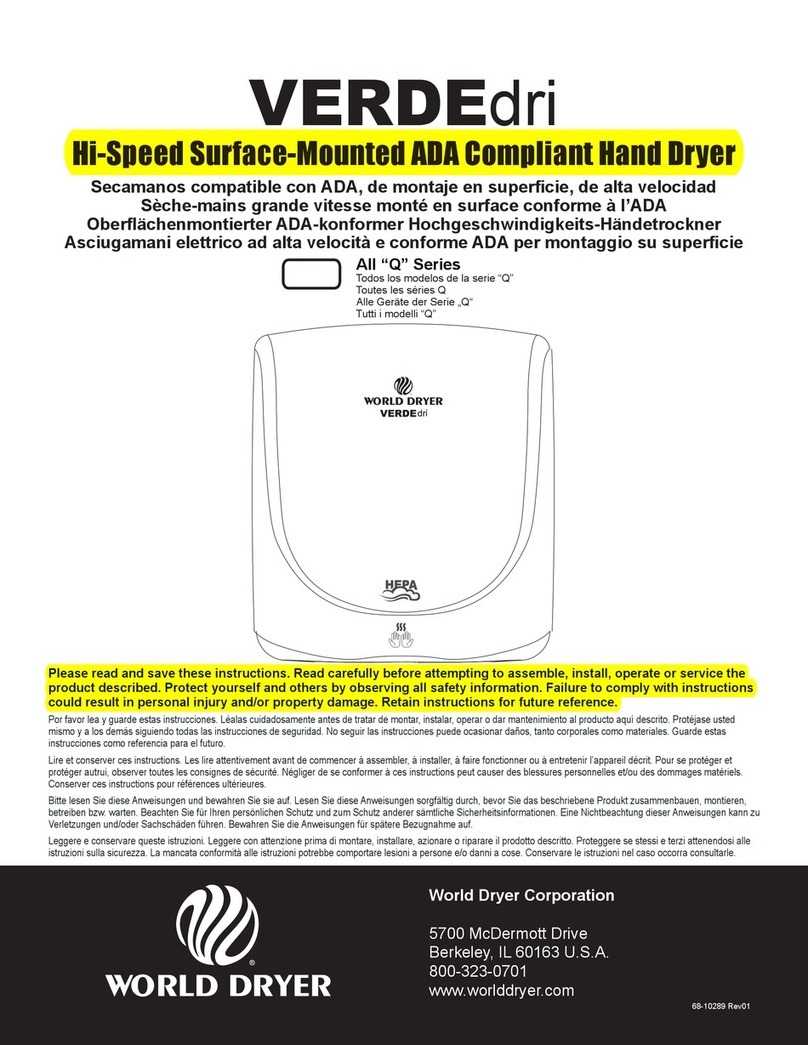GIRBAU SLI14D Administrator Guide

SLI14D
Installation/Operator Manual
WARNING: For your safety the
information in this manual must be
followed to minimize the risk of fire or
explosion and to prevent property
damage, personal injury or death.
— Do not store or use gasoline or other
flammable vapors and liquids in the
vicinity of this or any other appliance.
— WHAT TO DO IF YOU SMELL GAS:
• Do not try to light any appliance.
• Do not touch any electrical switch.
• Do not use any phone in your
building.
• Clear the room, building or area of all
occupants.
• Immediately call your gas supplier
from a neighbor’s phone. Follow the
gas supplier’s instructions.
• If you cannot reach your gas
supplier, call the fire department.
— Installation and service must be
performed by a competent professional.
AVERTISSEMENT: Assurez-vous de
bien suivre les instructions données dans
cette notice pour réduire au minimum le
risque d’incendie ou d’explosion ou pour
éviter tout dommage matériel, toute
blessure ou la mort.
— Ne pas entreposer ni utiliser d’essence
ni d’autres vapeurs ou liquides
inflammables à proximité de cet
appareil ou de tout autre appareil.
— QUE FAIRE SI VOUS SENTEZ UNE
ODEUR DE GAZ:
• Ne pas tenter d’allumer d’appareils.
• Ne touchez à aucun interrupteur. Ne
pas vous servir des téléphones se
trouvant dans le bâtiment.
• Évacuez la pièce, le bâtiment ou la
zone.
• Appelez immédiatement votre
fournisseur de gaz depuis un voisin.
Suivez les instructions du
fournisseur.
• Si vous ne pouvez rejoindre le
fournisseur de gaz, appelez le
service des incendies.
— L’installation et l’entretien doivent
être assurés par un professionnel
compétent.
Part No. 113433-14
Girbau, SA
Carretera Manlleu, KM1
Vic, Barcelona, Spain 08500
Telephone: 34 93 886 1100
Fax: 34 93 886 0785
e-mail: [email protected]

2 Girbau, SA 113433-14
“IMPORTANT NOTE TO PURCHASER”
Information must be obtained from your local gas supplier on the
instructions to be followed if the user smells gas. These
instructions must be posted in a prominent location near the dryer.
We have tried to make this manual as complete as possible and hope you will find it useful. The manufacturer
reserves the right to make changes from time to time, without notice or obligation, in prices, specifications, colors, and
material, and to change or discontinue models. The illustrations included in this manual may not depict your particular
dryer exactly.
IMPORTANT
For your convenience, log the following information:
DATE OF PURCHASE ______________________________________________________ MODEL NO. ________________
RESELLER’S NAME __________________________________________________________________________________
Serial Number(s) _____________________________________________________________________________________
____________________________________________________________________________________________________
____________________________________________________________________________________________________
Replacement parts can be obtained from your reseller or the Girbau, SA factory. When ordering replacement parts
from the factory, you can FAX your order to 34 93 886 0785 or telephone your order to 34 93 886 1100. Please specify
the dryer model number and serial number in addition to the description and part number, so that your order is processed
accurately and promptly.
These instructions are only valid if the following country code is on the appliance… If this code is not present on the
appliance, it is necessary to refer to the technical instructions which will provide the necessary information concerning
the modification of the appliance to the condition of use for the country.
In accordance with EN ISO 3166-1, the names of countries shall be represented by the following codes:
GB United Kingdom
IE Ireland
Retain This Manual in a Safe Place for Future Reference
This product embodies advanced concepts in engineering, design, and safety. If this product is properly
maintained, it will provide many years of safe, efficient, and trouble free operation.
Only qualified technicians should service this equipment.
OBSERVE ALL SAFETY PRECAUTIONS displayed on the equipment or specified in the installation
manual included with the dryer.
The following “FOR YOUR SAFETY” caution must be posted near the dryer in a prominent location.
SLI14D
FOR YOUR SAFETY
Do not store or use gasoline
or other flammable vapors
and liquids in the vicinity of
this or any other appliance.
POUR VOTRE SÉCURITÉ
Ne pas entreposer ni utiliser d’essence
ni d’autres vapeurs ou liquides
inflammables à proximité de cet
appareil ou de tout autre appareil.

IMPORTANT
You must disconnect and lockout the electric supply
and the gas supply or the steam supply before any
covers or guards are removed from the machine to
allow access for cleaning, adjusting, installation, or
testing of any equipment per OSHA standards.
Please observe all safety precautions displayed on
the equipment and/or specified in the installation
manual included with the dryer.
Before installation, check that the local distribution
conditions, nature of gas and pressure, and
adjustment of the appliances are compatible.
CAUTION
Dryer(s) should never be left unattended while in
operation.
“Caution: Label all wires prior to disconnection when
servicing controls. Wiring errors can cause
improper operation.”
«Attention: Lor des opérations d’entretien des
commandes étiqueter tous fils avant de les
déconnecter. Toute erreur de câblage peut étre une
source de danger et de panne.»
WARNING
Children should not be allowed to play on or near
the dryer(s). Children should be supervised if near
dryer(s) in operation.
Under no circumstances should the dryer door
switch(es), lint door/drawer switch(es), or heat
safety circuit(s) ever be disabled.
Do not modify this appliance.
The dryer must never be operated with any of the
back guards, outer tops, or service panels removed.
Personal injury or fire could result.
The dryer must never be operated without the lint
filter/screen in place, even if an external lint
collection system is used.
If the hi-limit switch trips, a service call is required
to investigate the reason and resolve the issue.
FOR YOUR SAFETY
Do not dry mop heads in the dryer. Do not use
dryer in the presence of dry cleaning fumes.
The dryers must not be installed or stored in an
area where it will be exposed to water and/or
weather.
The wiring diagram for the dryer is located behind
the control panel.
Table of Contents ____________
List of Acronyms ___________________
HVAC Heating, Ventilating, and Air-Conditioning
in WC Inches of Water Column
L.C.D. Liquid Crystal Display
L.P. Liquid Propane
OSHA Occupational Safety and Health Administration
UL Underwriters Laboratory
Safety Precautions.......................... 4
Specifications ................................. 6
Installation Procedures .................. 8
Location Requirements .................................... 8
Unpacking / Setting Up .................................... 8
Dryer Enclosure Requirements ........................ 8
Fresh Air Supply Requirements ....................... 9
Exhaust Requirements..................................... 9
Electrical Information ..................................... 11
Gas Information ............................................. 14
Converting from One Family
of Gas to Another ........................................... 16
Gas Pressure Testing..................................... 18
Steam Information .......................................... 19
Water Information .......................................... 20
Preparation for Operation / Start-Up .............. 21
Preoperational Test ........................................ 21
Preoperational Instructions ............................ 22
Shutdown Instructions .................................... 22
Service / Parts Information .......... 22
Service ........................................................... 22
Parts ............................................................... 22
Routine Maintenance .................... 23
Cleaning ......................................................... 23
Adjustments ................................................... 23
Data Label Information ................. 24

4 Girbau, SA 113433-14
Do not store or use gasoline or other flammable vapors and
liquids in the vicinity of this or any other appliance.
Do not spray aerosols in the vicinity of this appliance while it
is in operation.
Purchaser and user should consult the local gas supplier for
proper instructions to be followed in the event the user smells
gas. The instructions should be posted in a prominent
location.
What To Do If You Smell Gas:
• Do not try to light any appliance.
• Do not touch any electrical switch.
• Do not use any phone in your building.
• Clear the room, building, or area of all occupants.
• Immediately call your gas supplier from a neighbor’s
phone. Follow the gas supplier’s instructions.
• If you cannot reach your gas supplier, call the fire
department.
Installation and service must be performed by a qualified
installer, service agency, or gas supplier.
Dryers must be exhausted to the outdoors.
Although the manufacturer produces a very versatile dryer,
there are some articles that, due to fabric composition or
cleaning method, should not be dried in it.
Safety Precautions ____________________
!WARNING
For your safety, the information in this manual must
be followed to minimize the risk of fire or explosion
and to prevent property damage, personal injury, or
loss of life.
The dryer must never be operated with any of the
back guards, outer tops, or service panels removed.
Personal injury or fire could result.
Failure to properly install, maintain, and/or operate
dryer according to this manual and operator’s
manuals included with dryer may result in conditions,
which can cause serious injury, death and/or property
damage.
!WARNING
Dry only water washed fabrics. Do not dry articles
spotted or washed in dry cleaning solvents,
combustible detergents, industrial chemicals, or “all
purpose” cleaner. Explosion could result.
Do not dry rags or articles coated or contaminated
with gasoline, kerosene, oil, paint, or wax. Explosion
could result.
Items that have been spotted or soaked with
vegetable or cooking oil constitute a fire hazard and
should not be placed in a tumble dryer.
Do not dry mop heads. Contamination by wax or
flammable solvents will create a fire hazard.
The possible presence of residual quantities of aggressive
or decomposed chemicals in the load may produce damage
to the machine and harmful fumes.
A program should be established for the inspection and
cleaning of lint in the burner area, exhaust ductwork, and
area around the back of the dryer. The frequency of
inspection and cleaning can best be determined from
experience at each location.
Do not operate steam dryers with more than 150 psi (10.34
bar) steam pressure. Excessive steam pressure can damage
the steam coil and/or harm personnel.
Replace leaking flexible hoses or other steam fixtures
immediately. Do not operate the dryer with leaking flexible
hoses. Personal injury may result.
!WARNING
The collection of lint in the burner area and exhaust
ductwork can create a potential fire hazard.
For personal safety, the dryer must be electrically grounded
in accordance with local codes and/or the National Electrical
Code ANSI/NFPA NO. 70-LATEST EDITION or in Canada,
the Canadian Electrical Codes Parts 1 & 2 CSA C22.1-1990
or LATEST EDITION.
NOTE: Failure to electrically ground the dryer properly will
void the warranty.
!WARNING
Personal injury or fire could result should the dryer
door switch, lint door/drawer, or heat safety circuit
ever be disabled.
Remove articles from the dryer as soon as the drying cycle
has been completed.
!WARNING
Articles left in the dryer after the drying and cooling
cycles have been completed can create a fire hazard.
For safety, proper operation, and optimum performance, the
dryer must not be operated with a load less than 66% of its
rated capacity.
!WARNING
Do not use heat for drying articles that contain
plastic, foam, sponge rubber, or similarly textured
rubber materials. Drying in a heated tumbler may
damage plastics or rubber and also may be a fire
hazard.

NOTES _____________________________________________________
____________________________________________________________
____________________________________________________________
____________________________________________________________
____________________________________________________________
____________________________________________________________
____________________________________________________________
____________________________________________________________
____________________________________________________________
____________________________________________________________
____________________________________________________________
____________________________________________________________
____________________________________________________________
____________________________________________________________
____________________________________________________________
____________________________________________________________
____________________________________________________________
____________________________________________________________
____________________________________________________________
____________________________________________________________
____________________________________________________________
____________________________________________________________
____________________________________________________________
____________________________________________________________
____________________________________________________________
!WARNING
You must disconnect and lockout the electric supply
and the gas supply or the steam supply before any
covers or guards are removed from the machine to
allow access for cleaning, adjusting, installation, or
testing of any equipment per OSHA standards.
IMPORTANT: The dryer must be installed in a location/
environment, which the ambient temperature remains
between 40° F (4.44° C) and 130° F (54.44° C).
The operation of this appliance may affect the operation of
other types of gas appliances, which take their air for safe
combustion from the same room. If in doubt, consult the
appliance manufacturer(s).
Use this dryer only for its intended purpose, drying fabrics.
The “Cool Down” Cycle of tumble dryers should be used to
reduce the temperature of the items. They should not be
removed from the tumble dryer or piled or stacked while hot.
Fabric softeners or similar products should not be used in a
tumble dryer to eliminate the effects of static electricity, unless
this practice is specifically recommended by the manufacturer
of the fabric softener or product.
!WARNING
To reduce the risk of personal injury, install lockable
doors to prevent public access to the rear of the
dryers.
Exhaust duct outlet should be checked periodically for
blockages, and if any found, removed.
IMPORTANT: A means of restraint must be used to prevent
straining of the gas supply when the appliance is moved.
An external means of power removal (disconnect device)
must be provided by the installer.
CE ONLY
IMPORTANT: This appliance must only be installed and
operated in the country of destination indicated on the
dryer’s data plate. If the appliance is to be installed and
operated in a country other than the one indicated on the
data plate, a data plate amendment must be obtained from
Girbau.
IEC335 applies.
!WARNING
This appliance must only operate with the gas type
indicated on the dryer’s data plate. If the appliance
is converted (gas type is changed), a data plate
amendment must be obtained from Girbau.
This appliance may cause spillage of products of
combustion from an open-flue appliance fitted in the
same room, and that such an appliance shall be
tested for clearance of products with the appliance
in operation and all windows and doors closed.

6 Girbau, SA 113433-14
MAXIMUM CAPACITY
(DRY WEIGHT) PER POCKET
30 lb 13.61 kg
TUMBLER DIAMETER 30” 76.20 cm
TUMBLER DEPTH 27” 68.58 cm
TUMBLER VOLUME
PER POCKET
11.04 cu ft 312.62 L
TUMBLER/DRIVE MOTOR
PER POCKET
1/4 hp 0.19 kW
BLOWER/FAN MOTOR
PER POCKET
1/2 hp 0.37 kW
DOOR OPENING
(DIAMETER)
19-3/8” 49.21 cm
DOOR SILL HEIGHT
TOP POCKET / BOTTOM POCKET
54-11/16” / 14-7/8” 138.91 cm / 37.78 cm
WATER CONNECTION 3/4”-11.5 NH
(North America)
3/4” B.S.P.T.
(Outside North America)
DRYERS PER 20’/40’ CONTAINER 12 / 28
DRYERS PER 48’/53’ TRUCK 34 / 38
VOLTAGE AVAILABLE 120-240V 1ø 2w 50/60 Hz
APPROXIMATE NET WEIGHT 550 lb 249.48 kg
APPROXIMATE SHIPPING WEIGHT 580 lb 263.08 kg
AIRFLOW
PER POCKET
60 Hz 360 cfm 10.19 cmm
50 Hz 300 cfm 8.49 cmm
HEAT INPUT
PER POCKET
55,000 Btu/hr 13,860 kcal/hr
EXHAUST CONNECTION
(DIAMETER) PER POCKET
6” 15.24 cm
COMPRESSED AIR CONNECTION N / A
COMPRESSED AIR VOLUME N / A
INLET PIPE CONNECTION
PER POCKET
1/2” M.N.P.T.
3/8” M.B.S.P.T.
(CE and Australia Only)
VOLTAGE AVAILABLE 200-416V 1,3ø 2,3,4w 50/60 Hz
APPROXIMATE NET WEIGHT 550 lb 249.48 kg
APPROXIMATE SHIPPING WEIGHT 580 lb 263.08 kg
AIRFLOW
PER POCKET
60 Hz 360 cfm 10.19 cmm
50 Hz 300 cfm 8.49 cmm
EXHAUST CONNECTION
(DIAMETER) PER POCKET
6” 15.24 cm
COMPRESSED AIR CONNECTION N / A
COMPRESSED AIR VOLUME N / A
OVEN SIZE
PER POCKET
kW Btu/hr kcal/hr
7.9 26,962 6,794
8.3 28,327 7,138
9.0 30,716 7,740
11.3 38,566 9,719
12.4 42,320 10,665
12.5 42,661 10,751
13.5 46,074 11,611
VOLTAGE AVAILABLE 120-240V 1ø 2w 50/60 Hz
APPROXIMATE NET WEIGHT 580 lb 263.08 kg
APPROXIMATE SHIPPING WEIGHT 610 lb 276.69 kg
AIRFLOW
PER POCKET
60 Hz 360 cfm 10.19 cmm
50 Hz 300 cfm 8.49 cmm
STEAM CONSUMPTION
PER POCKET
63 lb/hr 28.58 kg/hr
OPERATING STEAM PRESSURE 150 psi max 10.34 bar
EXHAUST CONNECTION
(DIAMETER) PER POCKET
6” 15.24 cm
COMPRESSED AIR CONNECTION N / A
COMPRESSED AIR VOLUME N / A
BOILER HORSEPOWER
(NORMAL LOAD) PER POCKET
1.75 Bhp
Specifications _____________________________________________________________________
Shaded areas are stated in metric equivalents 9/30/05
GASELECTRICSTEAM
NOTE: The manufacturer reserves the right to make changes in specifications at any time without notice or obligation.

Specifications _____________________________________________________________________
NOTE: The manufacturer reserves the right to make changes in specifications at any time without notice or obligation.

8 Girbau, SA 113433-14
Installation Procedures ______________
Installation should be performed by competent professional
in accordance with local, state, and country codes. In the
absence of these codes, the installation must conform to
applicable American National Standards: ANSI Z223.1-
LATEST EDITION (National Fuel Gas Code) or ANSI/NFPA
NO. 70-LATEST EDITION (National Electrical Code) or in
Canada, the installation must conform to applicable Canadian
Standards: CAN/CGA-B149.1-M91 (Natural Gas) or CAN/
CGA-B149.2-M91 (L.P. Gas) or LATEST EDITION (for
General Installation and Gas Plumbing) or Canadian
Electrical Codes Parts 1 & 2 CSA C22.1-1990 or LATEST
EDITION (for Electrical Connections).
Location Requirements _______________
Before installing the dryer, be sure the location conforms to
local codes and ordinances. In the absence of such codes
or ordinances the location must conform with the National
Fuel Gas Code ANSI.Z223.1 LATEST EDITION, or in Canada,
the installation must conform to applicable Canadian
Standards: CAN/CGA-B149.1-M91 (Natural Gas) or CAN/
CGA-B149.2-M91 (L.P. Gas) or LATEST EDITION (for
General Installation and Gas Plumbing).
The dryer must be installed on a sound level floor capable of
supporting its weight. Carpeting must be removed from the
floor area that the dryer is to rest on.
The dryer must not be installed or stored in an area where it
will be exposed to water and/or weather.
Provisions for adequate air supply must be provided as noted
in this manual (refer to Fresh Air Supply Requirements
section).
Clearance provisions must be made from combustible
construction as noted in this manual (refer to Dryer Enclosure
Requirements section).
Provisions must be made for adequate clearances for
servicing and for operation as noted in this manual (refer to
Dryer Enclosure Requirements section).
The dryer must be installed with a proper exhaust duct
connection to the outside as noted in this manual (refer to
Exhaust Requirements section).
The dryer must be located in an area where correct exhaust
venting can be achieved as noted in this manual (refer to
Exhaust Requirements section).
IMPORTANT: The dryer should be located where a
minimum amount of exhaust ducting will be necessary.
The dryer must be installed with adequate clearance for air
openings into the combustion chamber.
CAUTION: This dryer produces combustible lint and
must be exhausted to the outdoors. Every 6 months,
inspect the exhaust ducting and remove any lint
buildup.
IMPORTANT: The dryer must be installed in a location/
environment, which the ambient temperature remains
between 40° F (4.44° C) and 130° F (54.44° C).
Unpacking / Setting Up ________________
Remove protective shipping material (i.e., plastic wrap and
optional shipping box) from the dryer.
IMPORTANT: Dryer must be transported and handled in an
upright position at all times.
The dryer can be moved to its final location while still attached
to the skid or with the skid removed. To remove the skid
from the dryer, locate and remove the 2 bolts securing the
base of the dryer to the wooden skid. One is located at the
center rear and the other is at the center front.
With the skid removed, use caution and assure all four
leveling legs are fully retracted, if the dryer is to be slid into
its final position.
Leveling Dryer
The dryer is equipped with 4 leveling legs, 1 at each corner
of the base. For optimum performance the dryer should be
level front-to-back and side-to-side.
Dryer Enclosure Requirements _______
Bulkheads and partitions should be made of noncombustible
material.
NOTE: Allowances must be made for opening the control
door.
A The requirement to allow the door to open completely is
33-inches (83.8 cm).
B A minimum overhead clearance of 6-inches (15.24 cm)
is required.
C Dryer should be positioned a minimum of 12-inches
(30.48 cm) away from the nearest obstruction. 24-inches
(60.96 cm) is recommended for ease of installation,
maintenance, and service.
D 1/16” (1.5875 mm) minimum is required.
E Flooring should be level or below dryer cabinet for ease
of removing panels during maintenance.
F Dryers may be positioned sidewall to sidewall, however
a 1/16” (1.5875 mm) minimum allowance must be made
for the opening and closing of the control door, along
with the removal of panels during maintenance.

Fresh Air Supply Requirements ______
This appliance may only be installed in a room that meets
the appropriate ventilation requirements specified in the
national installation regulations.
When the dryer is operating, it draws in room air, heats it,
passes this air through the tumbler, and exhausts it out of
the building. Therefore, the room air must be continually
replenished from the outdoors. If the make-up air is
inadequate, drying time and drying efficiency will be adversely
affected. Ignition problems and sail switch “fluttering”
problems may result, as well as premature motor failure from
overheating. The dryer must be installed with provisions for
adequate combustion and make-up air supply.
Air supply (make-up air) must be given careful consideration
to ensure proper performance of each dryer. As a general
rule, an unrestricted air entrance from the outdoors of
110 inch2(710 cm2) is required for each dryer. (Based on
1 inch2[6.5 cm2] per 1,000 Btu [252 kcal].)
It is not necessary to have a separate make-up air opening
for each dryer. Common make-up air openings are
acceptable. However, they must be set up in such a manner
that the make-up air is distributed equally to all the dryers.
Exhaust Requirements ________________
Exhaust ductwork should be designed and installed by a
qualified professional. Improperly sized ductwork will create
excessive back pressure, which results in slow drying,
increased use of energy, and shutdown of the burner by the
airflow (sail) switch, burner hi-limits, or lint chamber hi-limit
protector thermostat. The dryer must be installed with a
proper exhaust duct connection to the outside.
The design of the flue system shall be such that any
condensate formed when operating the appliance from cold
shall either be retained and subsequently re-evaporated or
discharged.
CAUTION: This dryer produces combustible lint and
must be exhausted to the outdoors.
Improperly sized or installed exhaust ductwork can
create a potential fire hazard.
The ductwork should be laid out in such a way that the
ductwork travels as directly as possible to the outdoors with
as few turns as possible. There should be a minimum 6-inch
(15.24 cm) clearance between the back guard and the first
bend in the ductwork for ease of servicing. Single or
independent dryer venting is recommended. It is suggested
that the use of 90° turns be avoided; use 30° and/or 45° bends
instead. The radius of the elbows should preferably be
1-1/2 times the diameter of the duct. All ductwork should be
smooth inside with no projections from sheet metal screws
or other obstructions, which will collect lint. When adding
ducts, overlap the duct being connected. All ductwork joints
must be taped to prevent moisture and lint from escaping
into the building. Back draft dampers must be installed in all
commonly ducted systems. Inspection doors should be
installed at strategic points in the exhaust ductwork for
periodic inspection and cleaning of lint from the ductwork.
IMPORTANT: Exhaust back pressure measured by a
manometer/magnehelic in the exhaust duct must be no
less than 0 and must not exceed 0.6 in WC (1.5 mb) with
both tumblers operating.
NOTE: It is recommended that exhaust or booster fans not
be used in the exhaust ductwork system except where
necessary to maintain exhaust back pressure (in the
exhaust duct) between zero and 0.6 inch water column
with both tumblers operating. Where employed, booster
fans must not activate the dryer airflow proving switch (sail
switch) when the dryer is not in operation.
When the exhaust ductwork passes through a wall, ceiling,
or roof made of combustible materials, the opening must
be 2-inches (5.08 cm) larger than the duct (all the way
around). The duct must be centered within this opening.
As per the National Fuel Gas Code, “Exhaust ducts for
type 2 clothes dryers shall be constructed of sheet metal or
other noncombustible material. Such ducts shall be
equivalent in strength and corrosion resistance to ducts
made of galvanized sheet steel not less than 26 gauge
(0.0195-inches [0.50 mm]) thick.”
The ductwork for this appliance must be suitable for the
appliance category in accordance with national installation
regulations of the country of destination.
A = 14-inches (35.56 cm) B = 16-inches (40.64 cm)
EXAMPLE: For a bank of 4 dryers, 2 unrestricted openings
measuring 14-inches by 16-inches (35.56 cm by 40.64 cm)
are acceptable.
To compensate for the use of registers or louvers used over
the openings, this area must be increased by approximately
33%. Make-up air openings should not be located in an area
directly near where exhaust vents exit the building.
Allowances must be made for remote or constricting
passageways or where dryers are located at high altitudes
or predominantly low pressure areas.
IMPORTANT: Make-up air must be free of dry cleaning
solvent fumes. Make-up air that is contaminated by dry
cleaning solvent fumes will result in irreparable damage to
the motors and other dryer components.
NOTE: Component failure due to dry cleaning solvent
fumes will void the warranty.

10 Girbau, SA 113433-14
Outside Ductwork Protection
To protect the outside end of the horizontal ductwork from
the weather, a 90° elbow bent downward should be installed
where the exhaust exits the building. If the ductwork travels
vertically up through the roof, it should be protected from the
weather by using a 180° turn to point the opening downward.
In either case, allow at least twice the diameter of the duct
between the duct opening and the nearest obstruction (refer
to the diagram).
IMPORTANT: Do not use screens, louvers, or caps on the
outside opening of the exhaust ductwork.
Single Dryer Venting
IMPORTANT: For extended ductwork runs, the cross-
sectional area of the ductwork can only be increased to an
extent. When the ductwork approaches the maximum
limits as noted in this manual, a professional HVAC firm
should be consulted for proper venting information.
NOTE 1 Opening from combustible materials must be 2-inches (5.08 cm)
larger than the duct (all the way around). The duct must be centered
within this opening.
NOTE 2 Distance should be 2 times the diameter of the duct to the nearest
obstruction.
A = 12 feet (3.66 meters)
B = 8-inches (20.32 cm)
The length of the ductwork from the dryer to the outside
exhaust outlet, must not exceed 12 feet (3.66 meters). The
minimum diameter of this ductwork must be at least
8-inches (20.32 cm) even though the dryer exhaust duct
connection is smaller. Including tumbler/dryer elbow
connections or elbows used for outside protection from the
weather, no more than 4 90° elbows should be used in the
exhaust duct run. If more than the equivalent of 4 90° elbows
are used, the cross-sectional area of the ductwork must be
increased.
Multiple Dryer (Common) Venting
IMPORTANT: For extended ductwork runs, the cross-
sectional area of the ductwork can only be increased to an
extent. When the ductwork approaches the maximum
limits as noted in this manual, a professional HVAC firm
should be consulted for proper venting information.
If it is not feasible to provide separate exhaust ducts for each
dryer, ducts from individual dryers may be channeled into a
“common main duct.” The individual ducts should enter the
bottom or side of the main duct at an angle not more than
45º in the direction of airflow. The main duct should be
tapered, with the diameter increasing before each individual
duct is added. The minimum diameter of the individual
ductwork must be at least 8-inches (20.32 cm).
IMPORTANT: No more than four dryers should be
connected to one main common duct.
NOTES _____________________________________________________
____________________________________________________________
____________________________________________________________
____________________________________________________________
____________________________________________________________
____________________________________________________________
____________________________________________________________
____________________________________________________________
____________________________________________________________
____________________________________________________________
____________________________________________________________
____________________________________________________________
____________________________________________________________

The illustration below shows the minimum cross-sectional
area for multiple dryer round or square venting. These figures
must be increased if the main duct run from the last dryer to
where it exhausts to the outdoors is longer than 12 feet (3.656
meters) or has more than 1 elbow in it.
Multiple Dryer Venting with 8-Inch (20.32 cm) Diameter
720 cfm (20.39 cmm) Exhaust Connections at Common Duct
NOTE 1 Opening from combustible materials must be 2-inches (5.08 cm)
larger than the duct (all the way around). The duct must be centered
within this opening.
NOTE 2 Distance should be 2 times the diameter of the duct to the nearest
obstruction.
Electrical Information _________________
Electrical Requirements
All electrical connections must be made by a properly licensed
and competent electrician. This is to ensure that the electrical
installation is adequate and conforms to local, state, and
national regulations or codes of the country of origin. In the
absence of such codes, all electrical connections, materials,
and workmanship must conform to the applicable
requirements of the National Electrical Code ANSI/NFPA NO.
70-LATEST EDITION or in Canada, the Canadian Electrical
Codes Parts 1 & 2 CSA C22.1-1990 or LATEST EDITION.
IMPORTANT: Failure to comply with these codes or
ordinances, and/or the requirements stipulated in this
manual can result in personal injury or component failure.
NOTE: Component failure due to improper installation will
void the warranty.
A = 8-inches (20.32 cm)
B = 12 feet (3.656 meters)
NUMBER OF DRYERS 4 3 2 1
MINIMUM CROSS-
SECTIONAL AREA
SQ IN 164 120 80 54
SQ CM 1058 774.2 516.1 348.4
MINIMUM ROUND
DUCT DIAMETER
IN 14 12 10 8
CM 35.56 30.48 25.4 20.32
Each pocket should be connected to an independently
protected branch circuit. The dryer must be connected with
copper wire only. Do not use aluminum wire, which could
cause a fire hazard. The copper conductor wire/cable must
be of proper ampacity and insulation in accordance with
electric codes for making all service connections.
NOTE: The use of aluminum wire will void the warranty.
An individual ground circuit must be provided to each
pocket, do not daisy chain.
Component failure due to improper voltage application will
void the warranty.
The manufacturer reserves the right to make changes in
specifications at any time without notice or obligation.
IMPORTANT: A separate protected circuit must be
provided to each pocket.
It is necessary to have a power disconnect for each
pocket. These disconnects must be located within 9
meters of the unit and also be identified as being one of
two power sources supplying a dryer.
The dryer must be connected to the electric supply shown
on the data label. In the case of 208 VAC or 240 VAC, the
supply voltage must match the electric service
specifications of the data label exactly.
The wire size must be properly sized to handle the related
current.
TERM LINE VOLTAGE
50 Hz 60 Hz
HIGH
260
226
283
249
MED
239
208
260
230
LOW
217
189
236
208
!WARNING
208 VAC and 240 VAC are not the same. Any damage
done to dryer components due to improper voltage
connections will automatically void the warranty.
!WARNING (Gas Models Only)
Dryers built for use with a voltage between 200 and
240 must verify the input voltage during installation.
If the nominal voltage is outside of the medium
tolerances shown on the diagram below, adjust the
autotransformers, located near the burner
assemblies. To adjust the autotransformer wiring,
place the red wire on the appropriate tap (HIGH, MED,
LOW) of the autotransformer. For additional wiring
details, refer to the electrical diagram located on the
inside of the control panel.

12 Girbau, SA 113433-14
Grounding
A ground (earth) connection must be provided and installed
in accordance with local, state, and national regulations or
codes of the country of origin. In the absence of these codes,
grounding must conform to applicable requirements of the
National Electrical Code ANSI/NFPA NO. 70-LATEST
EDITION, or in Canada, the installation must conform to
applicable Canada Standards: Canadian Electrical Codes
Parts 1 & 2 CSA C22.1-1990 or LATEST EDITION. The
ground connection may be to a proven earth ground at the
location service panel.
For added personal safety, when possible, it is suggested
that a separate ground wire (size per local codes) be
connected from the ground connection of the dryer to a
grounded cold water pipe. Do not ground to a gas pipe or
hot water pipe. The grounded cold water pipe must have
metal-to-metal connection all the way to the electrical ground.
If there are any nonmetallic interruptions, such as, a meter,
pump, plastic, rubber, or other insulating connectors, they
must be jumped out with a wire (size per local codes) and
securely clamped to bare metal at both ends.
IMPORTANT: For personal safety and proper operation,
the dryer must be grounded.
Provisions are made for ground connection in each dryer at
the electrical service connection area.
Electrical Connections
A wiring diagram is located behind the control panel for
connection data.
If local codes permit, power to the dryer can be made by the
use of a flexible UL listed power cord/pigtail (wire size must
conform to rating of dryer), or the dryer can be hard wired
directly to the service breaker panel. In both cases, a strain
relief must be installed where the wiring enters the dryer.
For CE Models Only
The means for disconnection from the supply must be
incorporated into wiring having a minimum contact separation
of 3.0 mm in all poles.
Single-Phase (1ø)
Wiring Connections / Hookup
The electrical input connections are made into the rear service
box located at the upper right area of the dryer. The ground
connection is made to the copper lug, also provided in this
box. To gain access, the service box cover must be removed.
Electrical Service Specifications
Gas and Steam Models Only
11/7/14
Electric Models Only
All electrically heated dryers must be connected to the electric
service shown on the dryer’s data label. The connecting wires
must be properly sized to handle the rated current.
11/7/14
ELECTRICAL SERVICE SPECIFICATIONS
IMPORTANT:
NOTES: A.
B.
C.
208 VAC AND 230/240 VAC ARE NOT THE SAME. When ordering,
specify exact voltage.
When fuses are used they must be dual element, time delay, current
limiting, class RK1 or RK5 ONLY. Calculate/determine correct fuse
value, by applying either local and/or National Electrical Codes to
listed appliance amp draw data.
Circuit breakers are thermal-magnetic (industrial) motor curve type
ONLY. For others, calculate/verify correct breaker size according to
appliance amp draw rating and type of breaker used.
Circuit breakers for 3-phase (3ø) dryers must be 3-pole type.
SERVICE
VOLTAGE PHASE WIRE
SERVICE
APPROX.
AMP DRAW CIRCUIT
BREAKER
60 Hz 50 Hz
GAS
120 1ø 2 10.3 —15
200 1ø 2 8.7 8.8 15
208 1ø 2 8.4 —15
220 1ø 2 8.1 8.1 15
230 1ø 2 —7.4 15
240 1ø 2 7.7 7.0 15
STEAM
120 1ø 2 9.3 —15
208 1ø 2 6.2 6.0 15
220 1ø 2 5.6 5.5 15
230 1ø 2 5.3 5.4 15
240 1ø 2 5.1 4.5 15
ELECTRICAL SERVICE SPECIFICATIONS
IMPORTANT:
NOTES: A.
B.
C.
208 VAC AND 230/240 VAC ARE NOT THE SAME. When ordering,
specify exact voltage.
When fuses are used they must be dual element, time delay, current
limiting, class RK1 or RK5 ONLY. Calculate/determine correct fuse
value, by applying either local and/or National Electrical Codes to
listed appliance amp draw data.
Circuit breakers are thermal-magnetic (industrial) type ONLY. For
others, calculate/verify correct breaker size according to appliance
amp draw rating and type of breaker used.
Circuit breakers for 3-phase (3ø) dryers must be 3-pole type.
SERVICE
VOLTAGE PHASE WIRE
SERVICE
OVEN
kW
APPROX.
AMP DRAW CIRCUIT
BREAKER
60 Hz 50 Hz
200 1ø 2 12.5 68.4 67.7 90
208 1ø 2 7.9 43.8 —60
208 1ø 2 13.5 70.7 —90
220 1ø 2 7.5 36.9 —40
220 1ø 2 11.3 —56.8 80
230 1ø 2 8.3 —41.3 60
230 1ø 2 12.4 —59.1 80
240 1ø 2 9.0 42.7 —60
240 1ø 2 13.5 61.5 —80
208 3ø 3 13.5 43.3 —60
220 3ø 3 11.3 35.3 —50
230 3ø 3 12.4 —36.5 50
240 3ø 3 13.5 37.7 —50
380 3ø 4 11.3 22.8 22.6 40
400 3ø 4 12.4 —23.1 40
416 3ø 4 13.5 —23.7 40

Gas and Steam Models Only
120-240V Application with Neutral
208-240V Application without Neutral
CAUTION: The dryer must be grounded. A ground
lug has been provided for this purpose.
Input connection wiring must be sized properly to handle the
dryer’s current draw. This information is printed on the dryer’s
data label.
IMPORTANT: A strain relief must be used where the input
wiring enters the oven assembly.
Electrically Heated Models Only
The electrical input connections are made at the rear service
box located at the right upper section of the dryer. The ground
connection is made to a copper lug also provided in this area.
To gain access, remove rear service cover.
The only electrical input connections to the dryer are the
3-phase (3ø) power leads (L1, L2, L3, and sometimes neutral)
and ground. Single-phase (1ø) power for the control circuit
and for any single-phase (1ø) motors (if present) is done
internally to the dryer by the factory at the oven contactor.
No single-phase (1ø) input connection is required on a
3-phase (3ø) dryer.
The neutral will only be used on 4-wire service. This is typical
for 380-416V, 50 Hz.
CAUTION: The dryer must be grounded. A ground
lug has been provided for this purpose.
Input connection wiring must be sized properly to handle the
dryer’s current draw. This information is printed on the dryer’s
data label.
Electric Models Only
Single-Phase (1ø) Wiring Connections / Hookup
NOTES _____________________________________________________
____________________________________________________________
____________________________________________________________
____________________________________________________________
____________________________________________________________
____________________________________________________________
____________________________________________________________
____________________________________________________________
____________________________________________________________
3-Phase (3ø) Wiring Connections / Hookup

14 Girbau, SA 113433-14
Gas Information _______________________
It is your responsibility to have all plumbing connections,
materials, and workmanship conform to local and state
regulations or codes of the country of destination. In the
absence of such codes, all plumbing connections, materials,
and workmanship must conform to the applicable local
requirements. In the USA this is the National Fuel Gas Code
ANSI Z223.1-LATEST EDITION, or in Canada, the Canadian
Installation Codes CAN/CGA-B149.1-M91 (Natural Gas) or
CAN/CGAB149.2-M91 (L.P. Gas) or LATEST EDITION.
In Australia, the fuel gas code is AS/NZS5601, local authority,
gas, electricity, and any other relevant statutory regulations.
It is important that gas pressure regulators meet applicable
pressure requirements, and that gas meters be rated for the
total amount of all the appliance Btu being supplied.
IMPORTANT: Failure to comply with these codes or
ordinances, and/or the requirements stipulated in this
manual, can result in personal injury and improper
operation of the dryer.
For ease of service, the individual gas supply line of each
dryer must have its own manual shutoff valve.
Failure to isolate or disconnect the dryer from supply as
noted can cause irreparable damage to the gas valve,
voiding the warranty.
The dryer and its individual shutoff valve must be
disconnected from the gas supply piping system during
any pressure testing of that system at test pressures in
excess of 1/2 psig (3.5 kPa) for non-CE dryers or 50 mb for
CE dryers.
NOTE: The dryer must be isolated from the gas supply
piping system by closing its individual manual shutoff valve
during any pressure test of the gas supply system at test
pressures equal to or less than 1/2 psig (3.5 kPa) for non-
CE dryers or 50 mb for CE dryers.
NOTES _____________________________________________________
____________________________________________________________
____________________________________________________________
____________________________________________________________
____________________________________________________________
____________________________________________________________
____________________________________________________________
____________________________________________________________
____________________________________________________________
____________________________________________________________
____________________________________________________________
____________________________________________________________
____________________________________________________________
____________________________________________________________
____________________________________________________________
____________________________________________________________
!WARNING
Fire or explosion could result due to failure of
isolating or disconnecting the gas supply as noted.
NOTE: Undersized gas piping will result in ignition
problems, slow drying, increased use of energy, and can
create a safety hazard.
The dryer must be connected to the type of heat/gas indicated
on the data label and pressure must be confirmed. If this
information does not agree with the type of gas available, do
not operate the dryer. Contact the reseller who sold the dryer
or contact the manufacturer.
The input ratings shown on the data label are for elevations
up to 2,000 feet (610 meters), unless elevation requirements
of over 2,000 feet (610 meters) were specified at the time
the dryer order was placed with the factory. The adjustment
or conversion of dryers in the field for elevations over 2,000
feet (610 meters) is made by changing each burner orifice.
If this conversion is necessary, contact the reseller who sold
the dryer or contact the manufacturer.
IMPORTANT: If connection to this appliance is made with
a flexible hose, it must be suitable for the appliance
category in accordance with national installation
regulations of the country of destination, and if in doubt the
installer must contact the supplier. The manufacturer of
this appliance does not recommend the use of flexible gas
supply line/hose. An external gas supply shutoff must be
provided.
CE Dryers
There are 2 N.P.T. to B.S.P.T. adaptors included with each
dryer, which must be installed to the gas inlets. The adaptors
are shipped in the upper tumbler.
IMPORTANT: Pipe joint compounds that resist the action
of natural, propane, and butane gases must be used.
!WARNING (CE Dryers Only)
This appliance must only be operated with the gas
type indicated on the dryer’s data plate. If the
appliance is converted (gas type changed), a data
plate amendment must be obtained from Girbau for
CE approved units.
Gas Connections
Inlet connection ............ 1/2” N.P.T. (non-CE dryers)
3/8” B.S.P.T. (CE dryers)
Inlet supply size ............ 1/2” Diameter Pipe (minimum)

Heat Input / Gas Consumption / Orifice (Injector) Data
Gas Specifications for Dryers Going to Rest of the World***
Gas Type and
Nominal Heating Value
Supply
Pressure
**Gross
Heat Input Orifice Size **Orifice
(Injector)
Quantity
Burner
Pressure
Btu/ft
3
in WC Btu/hr kW DMS mm in WC
Natural 1,000 7.0-13.0 55,000 16.12 20 4.089 13.0
*Liquid Propane 2,500 11.0 55,000 16.12 44 2.184 1 10.0
Shaded areas are stated in metric equivalents
* Gas valve’s internal regulator disabled.
** Information is per pocket/tumbler.
*** Consult factory for elevations over 2,000 feet (610 meters) for correct orifice size.
Gas Specifications for Dryers Going to CE Countries**
Gas Type and
Nominal Heating Value
Supply
Pressure****
**Gross
Heat Input **Fuel
Consumption
Orifice Size **Orifice
(Injector)
Quantity
Burner
Pressure
Btu/ft
3
mb Btu/hr kW DMS mm mb
Natural (I
2H
/I
2E
) 1,000 15-30 55,000 16.12 1.557 M
3
/H 22 3.988 16.9
Natural (I
2L
) 830 20-35 55,000 16.12 1.876 M
3
/H 22 3.988 19.5
Natural (I
2ELL
) 830 15-30 55,000 16.12 1.876 M
3
/H 22 3.988 19.5
*Natural (I
2E+
)1,000 20 55,000 16.12 1.557 M
3
/H 31 3.048 1—
830 25 55,000 16.12 1.876 M
3
/H 31 3.048 1—
*Butane (I
3+
) 3,175 28-30 55,000 16.12 1.162 kg/H 48 1.930 1—
*Propane (I
3+
) 2,500 37 55,000 16.12 1.162 kg/H 48 1.930 1—
Butane (I
3B/P
) 3,175 28-30/50 55,000 16.12 1.162 kg/H 44 2.184 118.1
Propane (I
3P
) 2,500 28-30/50 55,000 16.12 1.162 kg/H 44 2.184 124.9
Shaded areas are stated in metric equivalents
* Gas valve’s internal regulator disabled.
** Information is per pocket/tumbler.
*** Consult factory for elevations over 2,000 feet (610 meters) for correct orifice size.
**** Nominal supply pressure.
Gas Specifications for Dryers Going to Australia*
Gas
Type
Supply
Pressure
Gross
Heat Input Orifice Size Orifice
(Injector)
Quantity
Burner
Pressure
kPa MJ/h DMS mm kPa
Natural 1.5-3.0 58.03 22 3.988 10.69
Propane 2.74 58.03 44 2.184 12.49
Shaded areas are stated in metric equivalents
* Consult factory for elevations over 2,000 feet (610 meters) for correct orifice size.

16 Girbau, SA 113433-14
Piping / Connections
The dryer is provided with two 3/8” N.P.T. (3/8” B.S.P.T. for
CE dryers) inlet pipe connections (1 for each tumbler) at the
rear of the dryer. If a separate feed is provided for each
tumbler from the main supply line (header), then a 1/2” (12.7
mm) line connection is sufficient. However, if the top and
bottom tumbler connections are connected together, the
supply from the header must be increased to 3/4-inch (19.05
mm). There should be a minimum 6-inch (15.24 cm)
clearance between the back guard and the first bend in the
gas piping for ease of servicing. It is recommended that a
gas shutoff valve be provided to the gas supply line of each
dryer for ease in servicing.
Installer withinAustralia – refer to AS/NZS5601.1 for guidance
on gas supply pipe sizing required for this appliance
installation.
The size of the main gas supply line (header) will vary
depending on the distance this line travels from the gas meter
or, in the case of L.P. gas, the supply tank, other gas-operated
appliances on the same line, etc. Specific information
regarding supply line size should be determined by the gas
supplier.
NOTE: Undersized gas supply piping can create a low or
inconsistent pressure, which will result in erratic operation
of the burner ignition system.
TYPICAL NATURAL GAS INSTALLATION
Consistent gas pressure is essential at all gas connections.
It is recommended that a 3/4-inch (19.05 mm) pipe gas loop
be installed in the supply line servicing a bank of dryers. An
in-line pressure regulator must be installed in the gas supply
line (header) if the (natural) gas pressure exceeds 13.0 in
WC (32.34 mb) pressure.
A plugged tap, accessible for a pressure gauge connection,
must be installed in the main gas supply line immediately
upstream of the dryers.
TYPICAL L.P. GAS INSTALLATION
Converting from One Family
of Gas to Another _____________________
IMPORTANT: Pipe joint compounds that resist the action
of natural, L.P., and butane gases must be used.
Test all connections for leaks by brushing on a soapy
water solution (liquid detergent works well).
!WARNING
Never test for leaks with a flame!!!
!WARNING (CE Dryers)
This appliance must only be operated with the gas
type indicated on the dryer’s data plate. If the
appliance is converted (gas type changed), a data
plate amendment must be obtained from Girbau
(dryer’s serial number is required to purchase a
conversion kit).
IMPORTANT: Any burner changes or conversions must be
made by a qualified professional.
The dryers manufactured for Belgium, Luxemburg, Greece,
Estonia, Slovak Republic, Iceland, Malta, Poland and
Cyprus cannot be converted from one family of gas to
another.
Conversion from Natural Gas
to Propane or Butane Gas
The following conversion allows the dryer to be operated with
either propane, butane, or LPG. The use of gas valve kit
(P/N 140414) disables the internal regulator of the gas valve.
Therefore, the gas supply is ungoverned and an external
regulator must be provided at the source of the supply
(example L.P. tank) or the gas supply line to the dryer. The
L.P. kit supplied will depend on the country the dryer is
installed in.
Parts Required for Conversion:
Description P/N Qty
Unregulated Gas Conversion Kit*** 140414 2*
OR
Regulated L.P. Gas Conversion Kit**** 140416 2*
Burner Orifice (Injector) ** 2*
L.P. Conversion Label 114515 2*
* This includes 1 for each pocket/tumbler.
** Refer to page 15 for orifice (injector) size.
*** Required for unregulated propane or butane only.
**** Required for regulated LPG or propane only.
Instructions
Disconnect electrical power to the dryer.
Close all shutoff valves (for both top and bottom tumbler) in
dryer’s gas supply line.
IMPORTANT: The following procedures must be performed
on both top and bottom tumblers.
Open the panels located just below each loading door.

Unregulated Gas Valve
Regulate (govern) gas externally (refer to “Supply Pressure”
in chart on page 15) to the correct gas pressure for the gas
being used. Operate dryer through one complete cycle to
ensure proper operation.
Regulated Gas Valve
Refer to “Gas Pressure Adjustment” on page 18 to adjust the
gas valve to the appropriate burner pressure listed on page
15. The supply pressure must also match what is listed on
page 15 for the type of gas to be used.
IMPORTANT: Conversions done improperly can result in a
fire or explosion!
Conversion from Propane
or Butane Gas to Natural Gas
The following conversion allows the dryer to be operated with
natural gas.
Parts Required for Conversion:
Description P/N Qty
Vent Cap and Spring 140415 2*
Burner Orifice (Injector) ** 2*
* This includes 1 for each pocket (tumbler).
** Refer to page 15 for orifice (injector) size.
Instructions
Disconnect electrical power to the dryer.
Close all shutoff valves (for both top and bottom tumblers) in
dryer’s gas supply line.
IMPORTANT: The following procedures must be performed
on both top and bottom tumblers.
Open the panels located just below each loading door.
Locate the gas train and disconnect the union, 3 electrical
plugs, and the gas train mounting screws from the burner.
Carefully slide the gas train out of the gas train enclosure.
(The carbon ignitor located at the far end of the gas train is
very fragile.)
Remove 2 burner tube mounting screws and remove burner
tube in order to gain access to the orifice.
Using a 3/8” wrench or socket, remove the existing orifice
and replace it with an orifice from the kit.
IMPORTANT: Use extreme care when removing and
replacing orifice (injector). This orifice (injector) is made of
brass, which is easily damaged.
Reinstall the burner tube onto the burner base.
Locate the gas train and disconnect the union, 3 electrical
plugs, and the gas train mounting screws from the burner.
Carefully slide the gas train out of the gas train enclosure.
(The carbon ignitor located at the far end of the gas train is
very fragile.)
Remove 2 burner tube mounting screws and remove burner
tube in order to gain access to the orifice.
Using a 3/8” wrench or socket, remove the existing orifice
and replace it with an orifice from the kit.
IMPORTANT: Use extreme care when removing and
replacing orifice (injector). This orifice (injector) is made of
brass, which is easily damaged.
Reinstall the burner tube onto the burner base.
Use a flat screwdriver to remove the regulator vent cap.
•For unregulated L.P. gas (most countries): install
blocking pin (P/N 140414).
•For regulated L.P. gas (some countries): remove the
white plastic regulator adjustment screw (under vent
cap). Remove spring under screw and replace with
spring from kit (P/N 140416). Replace regulator
adjustment screw.
Install the gas train back into the dryer gas train enclosure.
Be sure the tab at the rear of the gas train engages into the
mounting slot.
Connect the union and the 3 electrical plugs.
Repeat these steps for the other burner.
Affix L.P. Conversion Label (P/N 114515) to the dryer’s data
label.
Complete L.P. Kit Conversion Confirmation Label (P/N
114083) and affix this label as close as possible to the dryer’s
existing dryer rating (data) label/plate.
Non-CE Dryers
Affix L.P. Conversion Rating Label Addendum (P/N 114090)
as close as possible to the dryer’s existing dryer rating (data)
label/plate.
CE Dryers
Affix new data plate label that came with the conversion kit.
Open all shutoff valves, reconnect electrical power to the
dryer, and test for leaks.
IMPORTANT: Never test for leaks with an open flame!!!
Use a soapy water solution or product intended for that
purpose.

18 Girbau, SA 113433-14
Gas Pressure Testing _________________
For proper operation, the gas pressure must be correct,
consistent and maintained at the gas pressure rates shown
on page 15. Provisions are made at the gas valve for taking
gas pressure readings.
There are two types of devices used to measure gas pressure.
They are the spring/mechanical type gauge and the
manometer. The use of the spring/mechanical type gauge is
not recommended because they are very easily damaged
and are not always accurate. The preferred type of gauge is
the manometer because it is a simple device to use and is
highly accurate. Amanometer is simply a glass or transparent
plastic tube with a scale graduated in inches or millibars.
When it is filled with water and pressure is applied, the water
in the tube rises, showing the exact gas pressure.
Gas Pressure Test Procedure
Turn gas cock in gas supply line to “OFF” position.
50 Hz dryers: Back out miniature screw inside pressure tap
and attach manometer (refer to the illustration on page 17).
60 Hz dryers: Install pressure tap and attach manometer (refer
to the illustration on page 17).
Turn gas cock to “ON” position.
Start the dryer in Heat Mode and wait for ignition. Gas
manifold pressure should be as shown on page 15.
If the gas pressure needs to be adjusted, refer to “Gas
Pressure Adjustment” on this page.
Once test is complete, turn gas cock to “OFF” position.
Remove manometer. Tighten screw inside the pressure tap
or install plug.
Turn gas cock to “ON” position and check for leaks with soap
solution with main burner “ON.”
Edge #1 for vent cap
Edge #2 for adjustment screw
Select from the following 3 options, the conversion to be
performed:
•Converting from unregulated L.P. to regulated
natural gas: use a flat screwdriver to remove the cap
with blocking pin and install the regulator vent cap from
the kit (P/N 140415).
•Converting from unregulated L.P. to unregulated
natural gas: no change to the regulator is required.
•Converting from regulated L.P. to regulated natural
gas: remove the white plastic regulator adjustment
screw (under vent cape). Remove spring under screw
and replace with spring from kit (P/N 140415). Replace
regulator adjustment screw.
Install the gas train back into the dryer gas train enclosure.
Be sure the tab at the rear of the gas train engages into the
mounting slot.
Connect the union and the 3 electrical plugs.
Repeat these steps for the other burner.
Open all shutoff valves, reconnect electrical power to the
dryer, and test for leaks.
Operate the dryer through 1 complete cycle to ensure proper
operation.
With dryer operating, check the manifold (burner) pressure
at the tap on the gas valve to ensure proper operating
pressure (refer to chart on page 15).
Gas Pressure Adjustment
Disconnect electrical power to the dryer.
IMPORTANT: The following procedures must be performed
on both top and bottom tumblers.
To adjust gas valve’s internal regulator, remove the regulator
vent cap with the regulator adjustment tool, which is located
on the back guard between the gas inlet and exhaust outlet
(refer to the illustration below for proper use of adjustment
tool). Be sure to use one of the wide ends of the adjustment
tool for removal of the vent cap. Once vent cap is removed,
the narrow end of the adjustment tool can be used to turn the
plastic adjustment screw in the valve. Turn the screw
clockwise to raise pressure and counterclockwise to lower
pressure.
Gas (burner) pressures are measured with the burner in
operation for all burner adjustment conditions. Therefore
once the necessary adjustments have been made, the dryer
must be operated in a heating cycle to verify that the pressure
is correct. If it is not correct, you must discontinue the power
to the unit and make further adjustments. Repeat these steps
as many times as necessary to achieve the correct burner
pressure. Once the adjustment of the valve is complete, the
vent cap must be replaced and sealed with, for example,
paint to prevent maladjustment by the user.
!WARNING (CE Dryers)
This appliance must only be operated with the gas
type indicated on the dryer’s data plate. If the
appliance is converted (gas type changed), a data
plate amendment must be obtained from Girbau.
Conversions done improperly can result in a fire or
explosion!

Steam Information ____________________
It is your responsibility to have all plumbing connections made
by a qualified professional to ensure that the steam plumbing
installation is adequate and conforms with local, state, and
country regulations or codes.
Care must be exercised when leveling steam dryers into final
position. After leveling the dryer, check the downward pitch
of the heat exchanger from front to rear with a level. Likewise,
check the downward pitch of the return condensate manifold
toward its outlet part. Absence of these downward pitches
will result in probable water hammer and premature heat
exchanger fracture and leakage.
The presence of condensate in the steam will cause water
hammer and subsequent heat exchanger failure. The steam
supply connection must be taken from the top of a
well-dripped steam main. If the supply run-out to the dryer
exceeds 25 feet (7.6 meters), it should be dripped just before
the control valve with a proper trap and dirt pocket.
IMPORTANT: Failure to comply with the requirements
stipulated in this manual can result in component failure,
which will void the warranty.
Steam Coil pH Level
The normal pH level for copper type steam coils must be
maintained between a value of 8.5 to 9.5. For steel type
steam coils the pH level must be maintained between a value
of 9.5 to 10.5. These limits are set to limit the acid attack of
the steam coils.
IMPORTANT: Coil failure due to improper pH level will void
the warranty.
Steam Requirements – High Pressure
Shaded areas are stated in metric equivalents
* The minimum operating pressure for optimum results is 100 psig (689.47
kPa).
Installation Instructions
To ensure an adequate supply of steam is provided, be sure
that the steam supply lines and steam return lines are sized
and laid out as stipulated in this manual. Inadequate steam
supply lines and steam return lines or improper steam
plumbing will result in poor performance and can cause
component failure. Clean, dry steam must be provided to
the dryer.
IMPORTANT: Steam coil failure due to water hammer by
wet steam will void the warranty.
The presence of condensate in the steam supply line will
cause water hammer and subsequent heat exchanger (steam
coil) failure. The steam supply connection into the main
supply line must be made with a minimum 10-inch (25.4 cm)
riser. This will prevent any condensate from draining towards
the dryer.
The steam supply line to the dryer must include a 12-inch
(30.48 cm) riser along with a drip trap and check valve. This
will prevent any condensate from entering the steam coil.
Operating Steam Pressure
Maximum 150 psig*1.0 MPa
Heat Input (Normal Load) 1.75
Bhp
Consumption (Approximate)
@ 125 psi (8.6 bar) 63 lb/hr 28.58 kg/hr

20 Girbau, SA 113433-14
Water Information _____________________
Before You Start
Check Local Codes and Permits
Call your local water company or the proper municipal
authority for information regarding local codes.
IMPORTANT: It is your responsibility to have all plumbing
connections made by a qualified professional to ensure
that the plumbing installation is adequate and conforms to
local, state, and federal regulations or codes.
It is the installer’s or owner’s responsibility to see that the
required water pressure, pipe size, or connections are
provided. The manufacturer assumes no responsibility if
the fire suppression system is not connected, installed, or
maintained properly.
Installation
Water Supply
The fire suppression system must be supplied with a minimum
water pipe size of 1/2-inch (12.7 mm) and be provided with
40 psi +/- 20 psi (2.75 bar +/- 1.37 bar) of pressure.
If the rear area of the dryer or the water supply is located in
an area where it will be exposed to cold/freezing
temperatures, provisions must be made to protect these water
lines from freezing.
Flexible hoses or couplings must be used. The dryer vibrates
slightly when it runs and this will cause the steam coil
connections to crack if they are hard piped to the supply and
return mains.
Shutoff valves for each dryer should be installed in the supply
line, return line, and drip trap return line. This will allow the
dryer to be isolated from the supply main and the return main
if the dryer needs maintenance work.
Install an inverted bucket steam trap and check valve at least
12-inches (30.48 cm) below the steam coil as close to the
coil as possible. A trap with a minimum capacity of 100 lb
(45.35 kg) of condensate per hour at 125 psi (8.62 bar) is
needed for each unit. (Based on 2 times the steam
consumption per hour.)
The supply line and the return line should be insulated. This
will save energy and provide for the safety of the operator
and maintenance personnel.
Water pockets in the supply line, caused by low points, will
provide wet steam to the coil possibly causing steam coil
damage. All horizontal runs of steam supply piping should
be pitched 1/4-inch (6.35 mm) for every 1 foot (0.31 meters)
back towards the steam supply header causing the
condensate in the line to drain to the header. Install a bypass
trap in any low point to eliminate wet steam.
IMPORTANT: Flexible hoses/couplings must be used. Coil
failure due to hard plumbing connections will void the
warranty.
!WARNING
If the water in the supply line or water solenoid valve
freezes, the fire suppression system will be
inoperative!!
Water Connections
The water connection is made to the 3/4”-11.5 NH hose
adaptor, which is shipped in the tumbler and must be installed
to the 1/2” N.P.T. water connection, located at the upper rear
of the dryer. A flexible supply line/coupling must be used in
an effort to avoid damaging the electric water solenoid valve.
NOTE: The 3/4”-11.5 NH is a standard hose coupling
screw thread. It is not to be confused with 3/4” N.P.T. The
sealing of an NH connection is made with a washer
opposed to the mating threads of an N.P.T. assembly. The
two thread designs are not compatible.
It is recommended that a filter or strainer be installed in the
water supply line.
IMPORTANT: Flexible supply line/coupling must be used.
Solenoid valve failure due to hard plumbing connections
will void warranty.
The dryer is to be connected to the water mains using a
new hose set and the old hose set should not be reused.
NOTES _____________________________________________________
____________________________________________________________
____________________________________________________________
____________________________________________________________
____________________________________________________________
____________________________________________________________
____________________________________________________________
____________________________________________________________
____________________________________________________________
____________________________________________________________
____________________________________________________________
____________________________________________________________
____________________________________________________________
Table of contents
Other GIRBAU Dryer manuals
Popular Dryer manuals by other brands
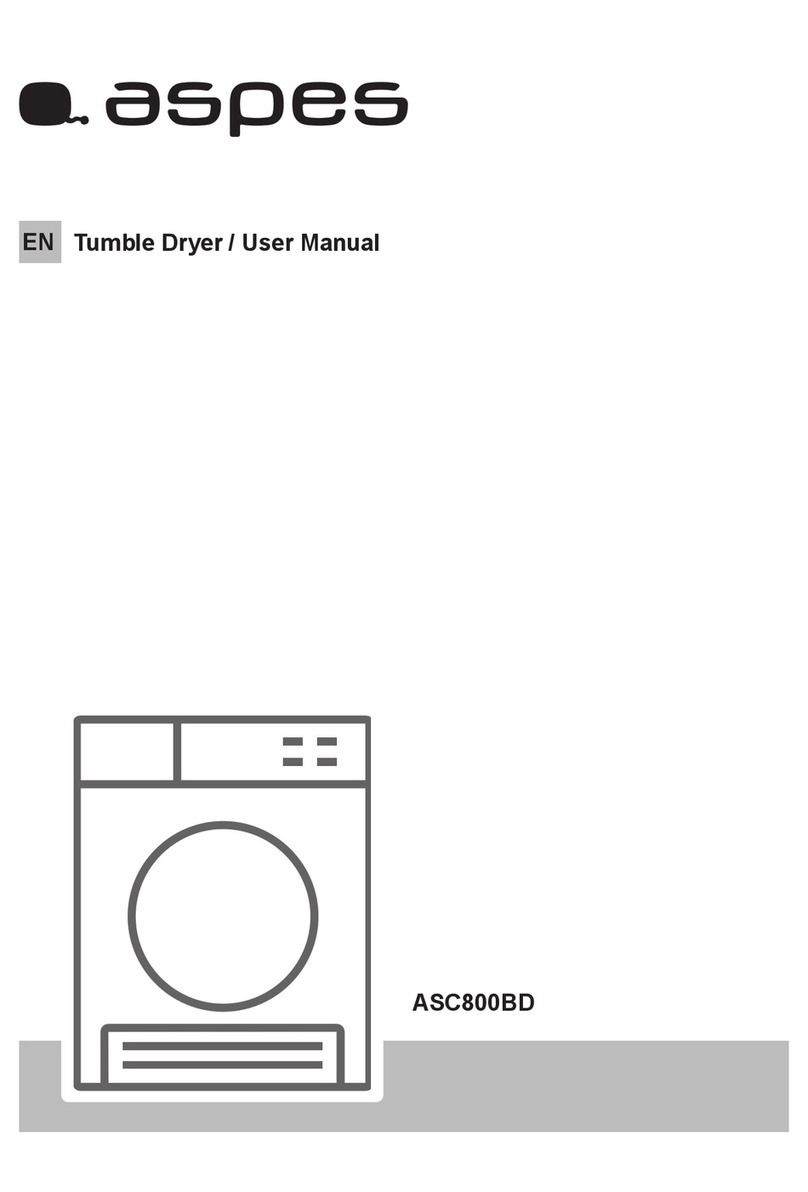
Aspes
Aspes ASC800BD user manual
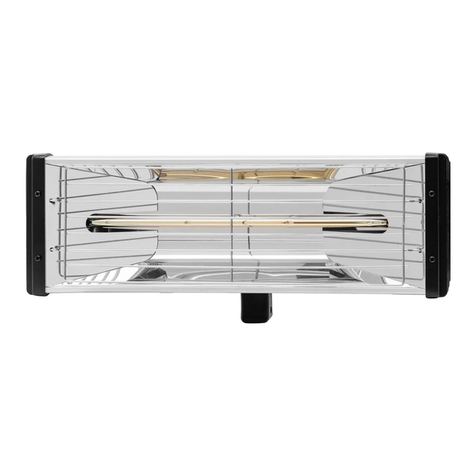
MSW
MSW MSW-IPD-1000-1W user manual
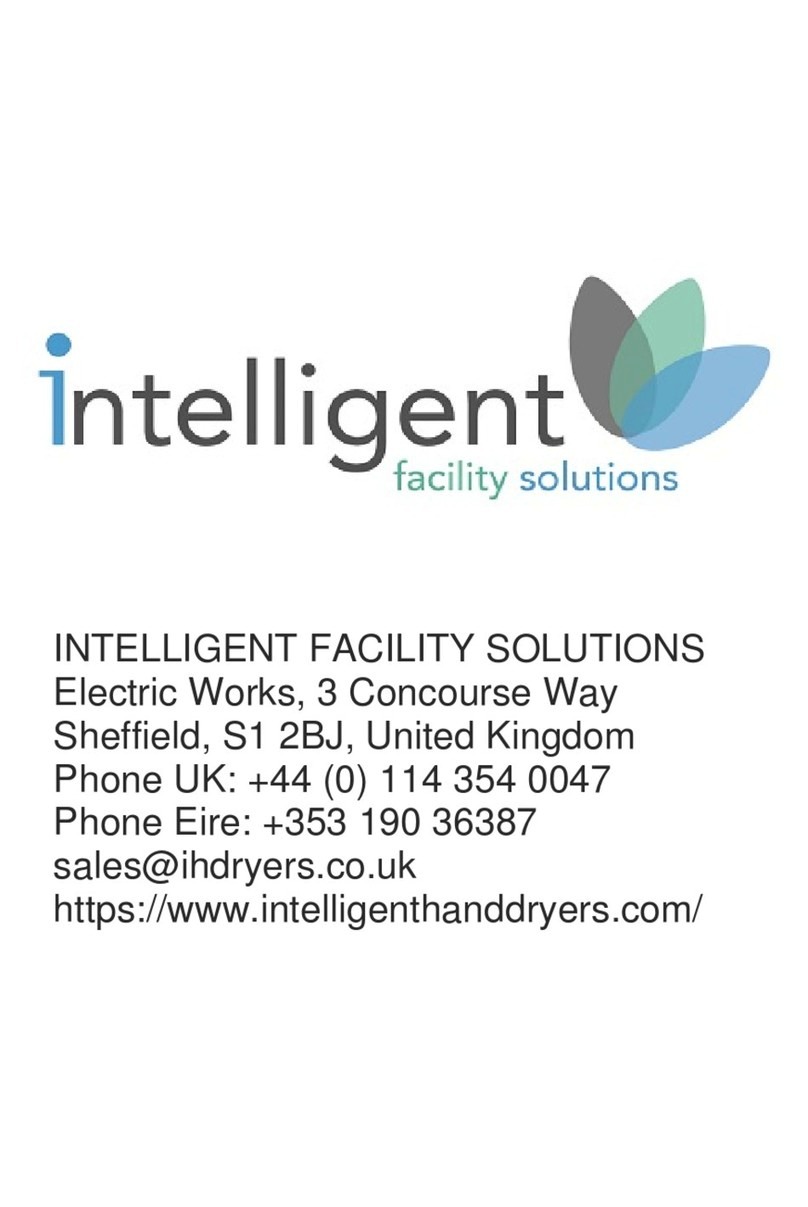
Intelligent Facility Solutions
Intelligent Facility Solutions ATC-Premblade15 Installation & user manual
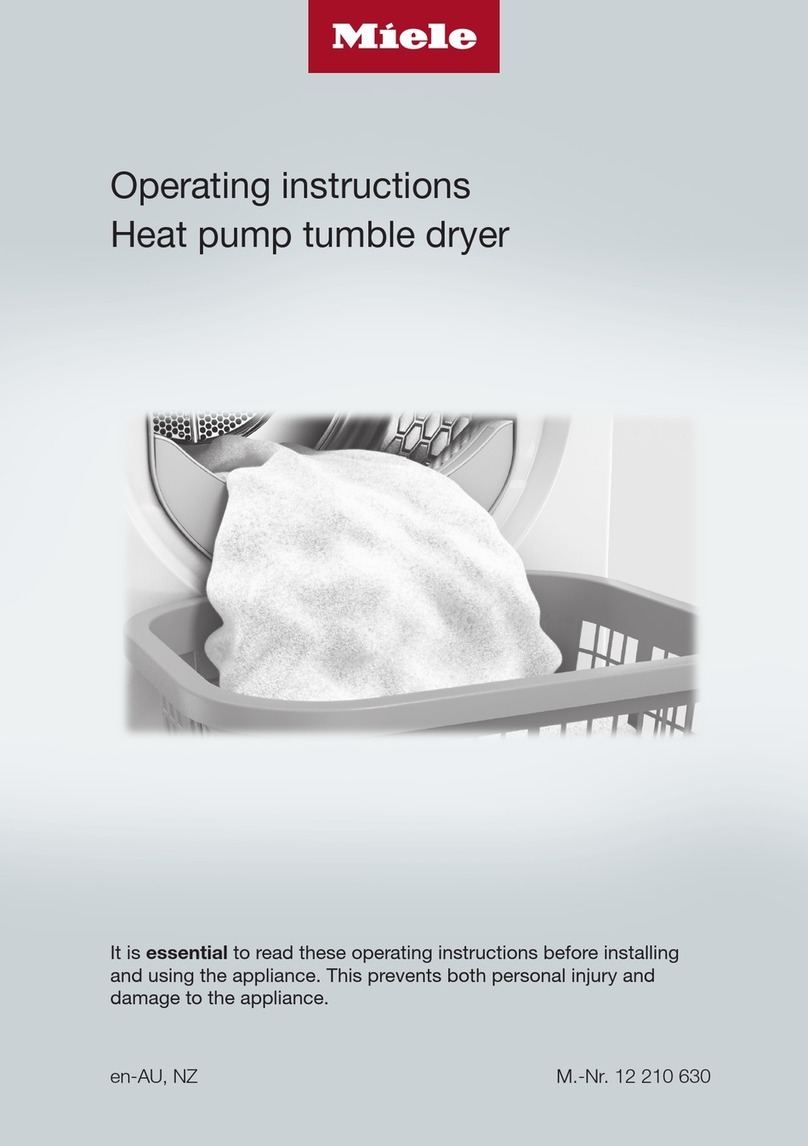
Miele
Miele TWD 364 WP operating instructions

Midea
Midea MDC100-CH21B/B05E-US Service manual

Whirlpool
Whirlpool WED97HEDW quick start guide

Fakir
Fakir DRYWIND user manual
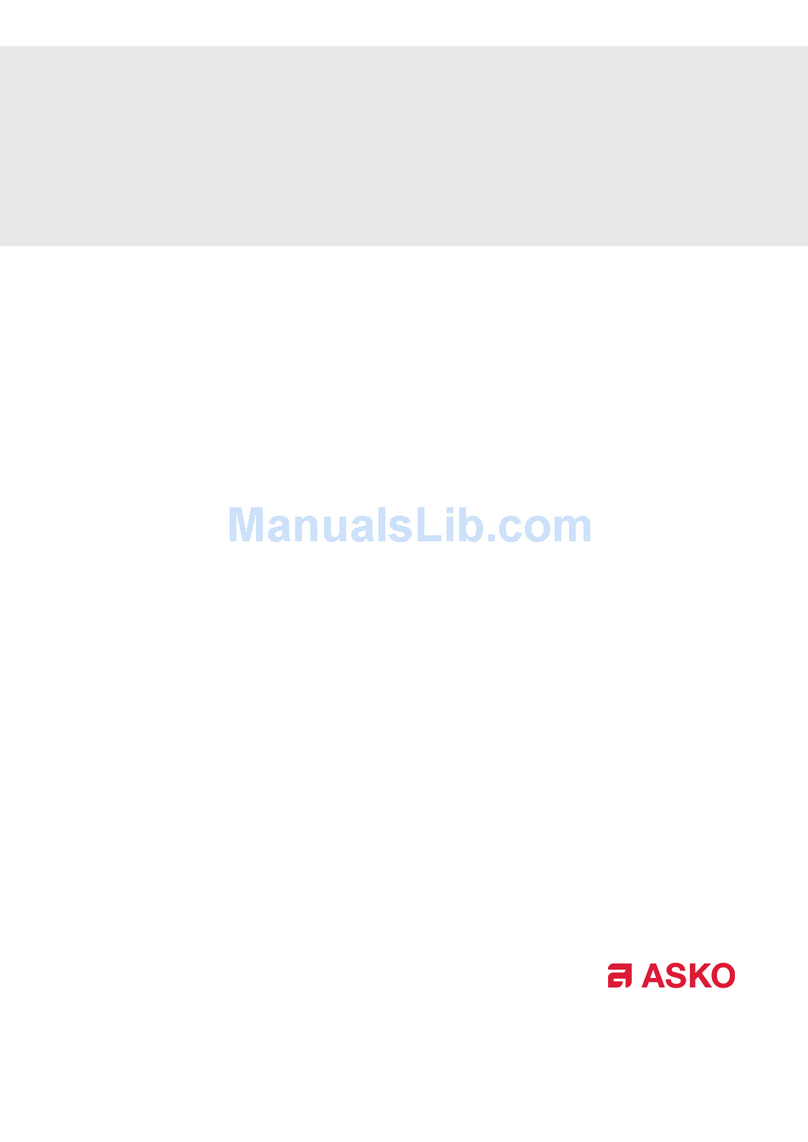
Asko
Asko T712 operating instructions

Devair
Devair DRD 750 instruction manual
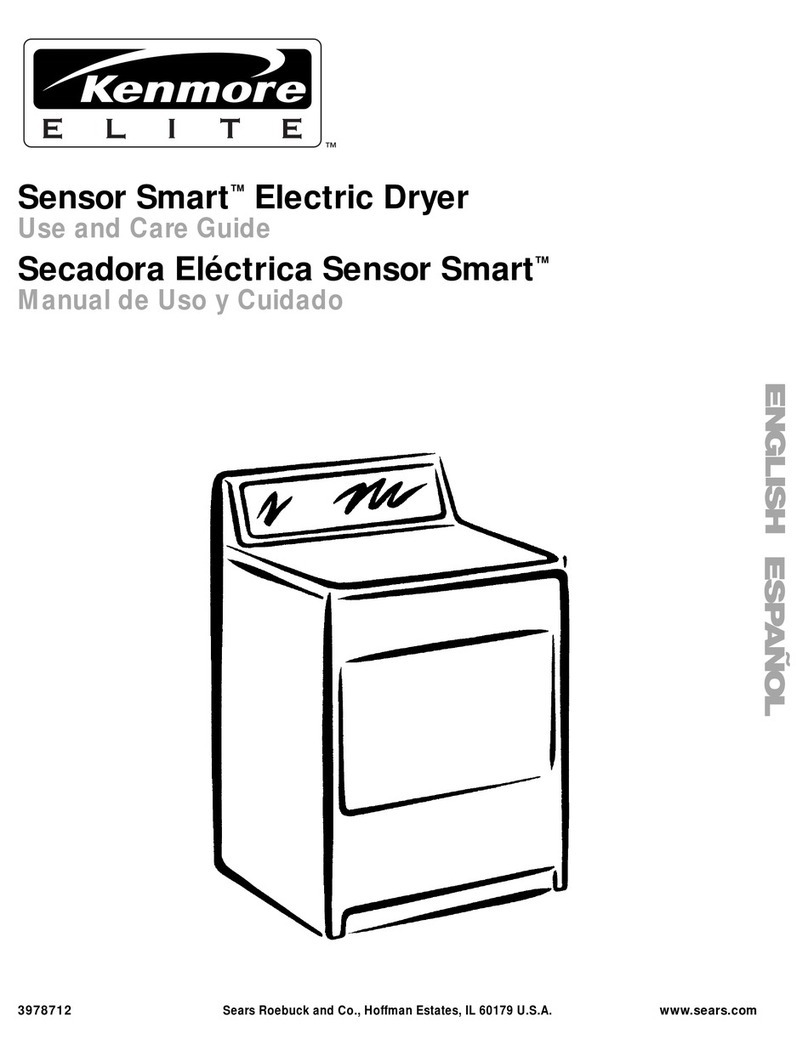
Kenmore
Kenmore Sensor smart electric dryer Use and care guide
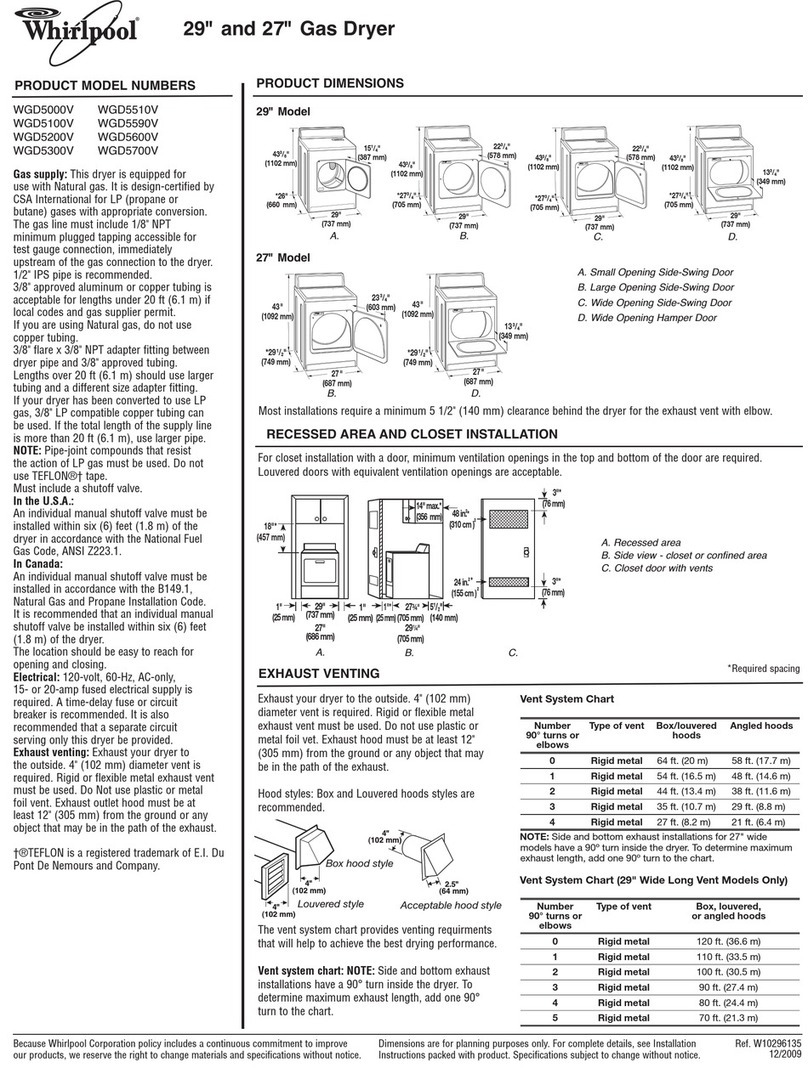
Whirlpool
Whirlpool WGD5700V - 7.0 Cu Ft Dimensions and installation information

Mitsubishi Electric
Mitsubishi Electric JT-SB216ESH-W-CE instruction manual



